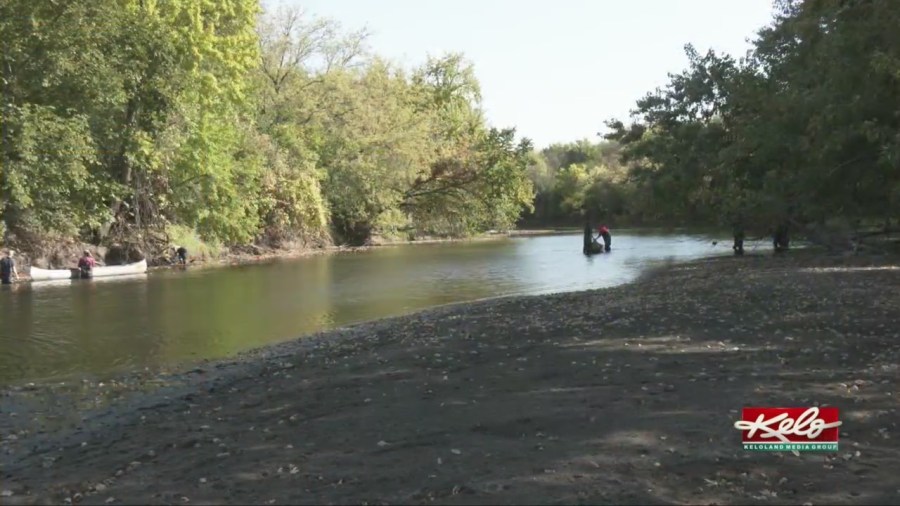SIOUX FALLS, S.D. (KELO) — RBI stands for runs batted in, but it also stands for a program that is scoring points in the Big Sioux River Watershed.
The state has a riparian buffer initiative (RBI) program and one focus in the Big Sioux River Watershed. The state, through the South Department of Agriculture and Natural Resources (DANR) is dedicated to installing buffer strips near the Big Sioux River. The state allocated $3 million to the program in 2021.
The $3 million was geared toward increasing payments for landowners who convert pasture land or marginal cropland into buffers that function as screens for water entering the river. The goal of buffer strips is to improve the water quality of the Big Sioux River.
The Big Sioux River Project partnered with the DANR on RBI projects.
The program is getting good results, according to the DANR and Barry Berg, the watershed manager of the Big Sioux River Project.
The 35 buffer strips enrolled in the RBI program has reduced nitrogen, phosphorus and sediment into the Big Sioux River, according to the Nov. 1 DANR report to the Legislature’s Joint Committee on Appropriations.
The annual reductions are 1,593.42 pounds of nitrogen, 331.83 pounds of phosphorus and 205.87 pounds of sediment.
Berg has data from 2013 to 2023 that shows buffer projects in the watershed are improving the river’s water quality. The Big Sioux River Project was using a seasonal riparian area management program (SRAM) in 2013 and after to reduce pollutants into Skunk Creek and the overall watershed.
“I ran through 10 years of data on Skunk Creek,” Berg said. Skunk Creek is specific to the Big Sioux River Project. It’s also a major feeder into the Big Sioux River in Sioux Falls.
Berg reviewed the test results for E. coli and total suspended solids (TSS).
In 2014, Skunk Creek was listed as an impaired water on the integrated water report from the DANR, for TSS.
After a number of SRAM projects, (Skunk Creek) “fell off the 2016 integrated report,” Berg said. It’s stayed off the list since 2016.
Specific to E. coli, Skunk Creek had exceeded E. coli levels at 70% in 2013. When the water quality was tested, the E. coli levels would exceed safe for limited contact recreation 70% of the time, Berg said.
By 2023, the percentage had dropped to 11% to 12%, Berg said. It didn’t drop from the impaired list for E. coli because the threshold is 10%.
“That’s a huge improvement,” Berg said. “Maybe if we do it for five more years it comes off the list for E. coli.”
After the 2021 Legislature put money toward the Big Sioux Watershed, the Big Sioux River Project partnered with the DANR.
“We teamed up to work on incentives. It’s better than it was before,” Berg said of the incentives offered to landowners to convert to buffer slips.
The Big Sioux River Project was offering landowners $140 per ace, Berg said. “With the DANR, we bumped that up $38.85.” The payment is now $178.85 because of the DANR partnership.
The $178.85 per acre payment are divided into $87.60 per acre paid through the DANR RBI program and $91.25 per acre through the Big Sioux River Project’s SRAM program, Berg said.
The result is more money to spend on buffer projects.
The DANR’s legislative report said there are 26 additional buffer projects involving 142,652 linear feet in the later stages of negotiations. These 26 projects would equal 382.38 acres at a cost of $798,537.23.
Direct mailings to landowners in the Big Sioux watershed were also successful, the DANR said in the Nov. 1 report. The October 2023 mailings were sent to 1,293 landowners. Another direct mailing was planed for later this month.


